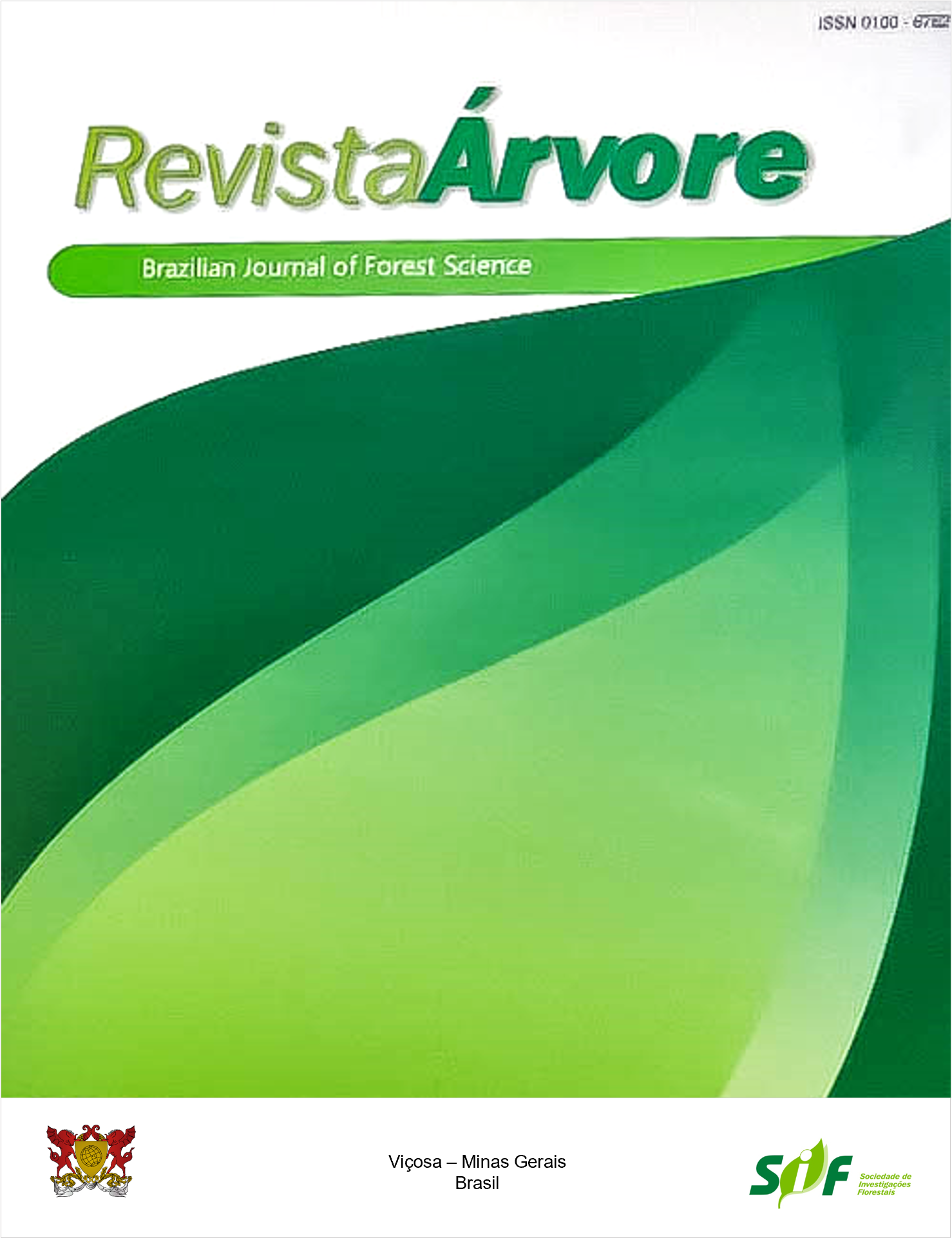EFFECTS OF ROOT DEFORMATION AND LIGHT AVAILABILITY ON GROWTH AND BIOMASS ALLOCATION OF Senna multijuga SEEDLINGS (Rich) H. S. Irwin & Barneby
Keywords:
Brazilian Atlantic Rainforest, Pricking-out, Seedling qualityAbstract
The effects of root deformation caused by errors in the pricking-out process in forest nurseries are still unknown for tropical tree seedlings. We analyzed the effects of light availability and root deformation on growth and biomass allocation in seedlings of Senna multijuga, a pioneer tropical tree commonly used in forest restoration programs. Our hypotheses were: (a) as a typical light-demanding species, the seedlings of S. multijuga may have their growth compromised by low light availability; (b) root deformation impairs growth rates and induces changes in biomass allocation; and (c) the effects of low light availability on growth and biomass allocation are increased by root deformation. Seedlings with and without root deformation were cultivated for 43 days under three levels of total daily photosynthetically active radiation (PAR) (28, 12, and 1 mol photons m-2 day-1). Seedlings of S. multijuga had their growth rates severely affected by values of PAR at about 1 mol photons m-2 day-1, but root deformation did not affect the relative growth rates of the whole plant. Instead, root deformation caused a decrease in the relative growth rate of roots in all light availabilities. The changes in root growth affected biomass allocation to the roots. The interactive effects of light availability and root deformation on the allocation of biomass to leaves are more pronounced at low light availability. Root deformations may lead to the production of seedlings with a low competitiveness capacity regardless of light conditions.
Keywords: Brazilian Atlantic Rainforest; Pricking-out; Seedling quality
Downloads
Published
How to Cite
Issue
Section
License
Copyright (c) 2021 Revista Árvore

This work is licensed under a Creative Commons Attribution 4.0 International License.
All authors agreed to submit the work to Revista Árvore and granted the exclusive license to publish the article. The authors affirm that it is an original work and has not been previously published elsewhere. The scientific content and opinions expressed in the article are the sole responsibility of the authors and reflect their opinions, not necessarily representing the opinions of the editorial board of Revista Árvore or of the Society of Forest Investigations (SIF).




